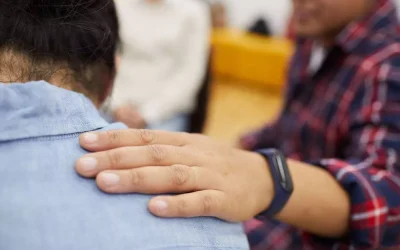Your healthcare provider can help you determine if this is right for you and how best to implement it. Always talk to your healthcare provider before taking any medications for opioid withdrawal. Note that physical dependence alone does not necessarily mean an addiction or unhealthy use. For example, a person taking opioids as prescribed for cancer pain may become physically dependent on the drug but not have OUD. It is not recommended to stop opioids quickly during pregnancy, as it can lead to serious consequences such as miscarriage, fetal distress, or preterm labor.
Psychological Symptoms
Caring for Babies With Opioid Withdrawal – AAMC
Caring for Babies With Opioid Withdrawal.
Posted: Mon, 16 Apr 2018 07:00:00 GMT [source]
Withdrawal symptoms after stopping shorter-acting opioids—such as heroin—begin within hours of the last dose. Withdrawal symptoms from longer-acting opioids, such as methadone, can begin after several days. Drugs.com provides accurate and independent information on more than 24,000 prescription drugs, over-the-counter medicines and natural products.
- Caution is warranted when using drugs that may either increase methadone clearance or decrease its effects to prevent the precipitation of withdrawal symptoms.
- Your body will let you know by generating a number of uncomfortable, often severe symptoms.
- The symptoms usually peak 2–3 days after a person stops using methadone.
- Opioid drugs, like oxycodone or morphine, can help with pain when you have surgery or when you’ve been injured.
- Once your opioid taper starts and you’re taking a lower dose of opioids, you start to have a lower tolerance to opioids.
Rigid rules at methadone clinics are jeopardizing patients’ path to recovery from opioid addiction

She currently serves as a Director of adult outpatient services in a community health center. Methadone is a prescription drug that a person should only use under the supervision of a doctor or another medical professional. The stages of methadone withdrawal depend on the dosage and how much of the medication a person takes.
- Call your doctor at once if you have a headache with chest pain and severe dizziness, and fast or pounding heartbeats.
- The patient should commence psychosocial treatment as described in these guidelines.
- Methadone works by specifically targeting a type of opioid receptor known as a mu receptor.
- All opioid dependent patients who have withdrawn from opioids should be advised that they are at increased risk of overdose due to reduced opioid tolerance.
- This means that it is addictive and, because it’s an opioid, stopping methadone causes opioid withdrawal.
Management of stimulant withdrawal
Knowing the odds will help you understand the value of ongoing treatment. The WHO acknowledges that this is only a general recommendation and that the taper schedule should be tailored to each individual’s needs. So, dose reductions can occur once a week, once every two weeks, or less often. These symptoms may come and go over several weeks or months. They can be highly frustrating for both people in recovery and their loved ones.
Other medicines used to treat heroin addiction are buprenorphine, and buprenorphine with naloxone. If you stop taking your methadone suddenly, you will methadone withdrawal have withdrawal symptoms. These include feeling restless or anxious, runny nose, sweating, feeling or being sick, diarrhoea and muscle cramps.
- Many opioid medications also create a feeling of calm and sometimes euphoria, which is part of the reason they can lead to dependence.
- If you’re experiencing methadone withdrawal, your healthcare team may reevaluate your taper schedule.
- When an opioid overdose is suspected, naloxone hydrochloride should be administered as soon as possible to reverse the effects of an overdose.
Related treatment guides
- Your doctor will keep this in mind when deciding on a treatment plan.
- Although tapering is considered the best way of detoxing from methadone, it can still be challenging.
- But there are risks linked to opioid use — including severe constipation, nausea, dependence, misuse, opioid use disorder and accidental overdose.
- At a “maintenance dose,” it prevents withdrawal symptoms without causing a high or leading to sedation.
- Your brain relies on the pain relief they bring, and you have withdrawal symptoms if you stop taking them suddenly.
People who are not dependent on drugs will not experience withdrawal and hence do not need WM. Refer to the patient’s assessment to determine if he or she is dependent and requires WM. Withdrawal symptoms are generally mild each time you reduce the dose of methadone during a taper.
